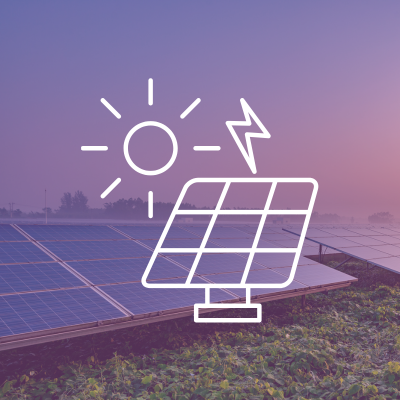
Roots or Roofs - UK Solar Farm Development
Roots or Roofs...
The balance between solar energy implementation on farmland and our built environment.
The push for renewable energy has (rightly) gained momentum in the UK, and one of the foremost technologies available to the push for Net Zero is Solar.
However, this drive to produce more of our energy in environmentally sensitive ways raises its own challenges. The main objection to the technology seems to be the use of farmland for solar installations, instead of utilising pre-existing and newly built infrastructure.
Driving around the country and seeing new housing developments, business parks and distribution centres springing up, it’s surprising to see how many of these developments are devoid of any solar generation infrastructure. In the countryside, new solar farm applications are on the up; 2010 to 2015 saw a huge increase, before dropping off in 2016 and 2017 following a reduction in subsidies. Since 2017, the number of applications has risen again, albeit not to the same level as its peak in 2015. Solar farms currently cover circa 0.1% of land in the UK, and the government’s 2035 target of 70GW of generation by solar would be estimated to require circa 0.3% of UK land, taking into account ongoing improvements in technology. To contextualise, circa 1.3% of land in the UK is classed as residential.
One of the perceived most pressing disadvantages of this rise is the potential loss of agricultural land. Whilst applications are focused on less productive parcels of land (grades 3b to 5), there needs to be a serious conversation around utilising our already developed land mass before taking valuable farmland out of production.
The UK’s farmland is an invaluable resource, and the UK is already facing challenges in agricultural output. Indeed, provisional data from Defra suggests 2024 is set to be in the top three worst harvests on record. Whilst in a grand-scheme-of-things overview the amount of productive land lost to solar development is small, it should nonetheless be considered as something with the potential to further undermine our own food security, forcing us to rely even more heavily on imports in a time when we should be prioritising home-grown produce.
Moreover, the environmental implications of sacrificing farmland for solar energy shouldn't be overlooked. Solar farms can disrupt ecosystems and displace wildlife. In contrast, rooftops typically involve minimal ecological disruption and offer a more harmonious integration of renewable energy systems, owing to the proximity between production and end user.
Another significant factor to consider is the regulatory and planning framework surrounding solar energy projects. Ground-mounted solar farms often face lengthy approval processes, and the complexities that come with land use change, community opposition, and environmental assessments can delay deployment.
This is all before we consider the fact that a low-hanging fruit option would be to legislate that all new development is required to incorporate solar technology. Obviously, this will come with its own hurdles but generally seems a sensible proposal (from this layman’s perspective).
Of course, a balanced approach is essential. Land under solar farms can still be productive when used in combination with the correct systems; livestock can graze beneath panels, and when implemented correctly, sites can provide valuable habitats for pollinators and other wildlife. Additionally, once the solar farm has been decommissioned and dismantled, the site can return to agriculture, but this will be a cyclic process with capacity being created elsewhere.
While solar energy is essential in mitigating climate change, and the use of farmland is undoubtedly necessary for this implementation, the integration of, and ongoing focus on, incorporating solar panels into our already built environment before developing farmland offers a myriad of advantages. From preserving agricultural productivity and protecting local ecosystems to facilitating quicker installation processes, the case for a more concerted focus on rooftop solar is compelling. As the UK meanders its way toward a more sustainable energy future, making informed choices about land use will be crucial in ensuring that renewable energy initiatives align with broader goals of food security and environmental preservation.
If you are looking to find out about our rural professional vacancies, please contact myself, Max Johnson, in the Rural team here at MorePeople.
My contact details can be found by clicking here.
